Related Research Articles
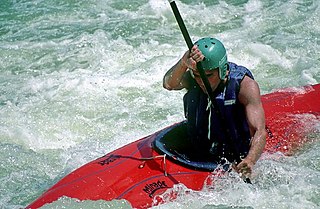
A kayak is a small, narrow watercraft which is typically propelled by means of a double-bladed paddle. The word kayak originates from the Greenlandic word qajaq.

A multihull is a ship or boat with more than one hull, whereas a vessel with a single hull is a monohull.
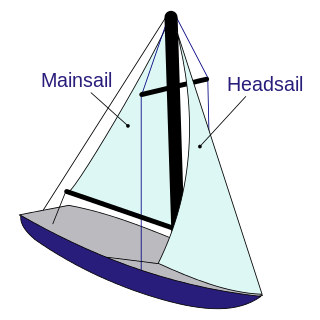
A sailboat or sailing boat is a boat propelled partly or entirely by sails and is smaller than a sailing ship. Distinctions in what constitutes a sailing boat and ship vary by region and maritime culture.

A seaplane is a powered fixed-wing aircraft capable of taking off and landing (alighting) on water. Seaplanes are usually divided into two categories based on their technological characteristics: floatplanes and flying boats; the latter are generally far larger and can carry far more. Seaplanes that can also take off and land on airfields are in a subclass called amphibious aircraft, or amphibians. Seaplanes were sometimes called hydroplanes, but currently this term applies instead to motor-powered watercraft that use the technique of hydrodynamic lift to skim the surface of water when running at speed.
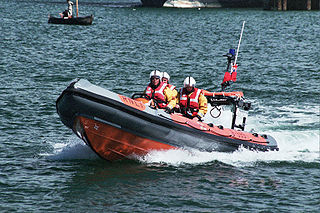
A rigid inflatable boat (RIB), also rigid-hull inflatable boat or rigid-hulled inflatable boat (RHIB), is a lightweight but high-performance and high-capacity unsinkable boat constructed with a rigid hull bottom joined to side-forming air tubes that are inflated with air to a high pressure so as to give the sides resilient rigidity along the boat's topsides. The design is stable, light, fast and seaworthy. The inflated collar acts as a life jacket, ensuring that the vessel retains its buoyancy, even if the boat is taking on water. The RIB is an evolutionary development of the inflatable boat with a rubberized fabric bottom that is stiffened with flat boards within the collar to form the deck or floor of the boat.

Planing is the mode of operation for a waterborne craft in which its weight is predominantly supported by hydrodynamic lift, rather than hydrostatic lift (buoyancy).

Proas are various types of multi-hull outrigger sailboats of the Austronesian peoples. The terms were used for native Austronesian ships in European records during the Colonial era indiscriminately, and thus can confusingly refer to the double-ended single-outrigger boats of Oceania, the double-outrigger boats of Island Southeast Asia, and sometimes ships with no outriggers or sails at all.

The United States' S-class submarines, often simply called S-boats, were the first class of submarines with a significant number built to United States Navy designs. Others of this class were built to contractor designs.
Hull speed or displacement speed is the speed at which the wavelength of a vessel's bow wave is equal to the waterline length of the vessel. As boat speed increases from rest, the wavelength of the bow wave increases, and usually its crest-to-trough dimension (height) increases as well. When hull speed is exceeded, a vessel in displacement mode will appear to be climbing up the back of its bow wave.

The 18 ft Skiff is considered the fastest class of sailing skiffs. The class has a long history beginning with races on Sydney Harbour, Australia in 1892 and later in New Zealand. The boat has changed significantly since the early days, bringing in new technology as it became available. Because of the need of strength, agility and skill, the class is considered to be the top level of small boat sailing. In Australia this boat is called the "Aussie 18" due to its inherent connections to Australia. It is the fastest conventional non-foiling monohull on the yardstick rating, with a score of 675, coming only third after the Tornado and Inter 20.

Boston Whaler is an American boat manufacturer. It is a subsidiary of the Brunswick Boat Group, a division of the Brunswick Corporation. Boston Whalers were originally produced in Massachusetts, hence the name, but today are manufactured in Edgewater, Florida.

The vinta is a traditional outrigger boat from the Philippine island of Mindanao. The boats are made by Sama-Bajau, Tausug and Yakan peoples living in the Sulu Archipelago, Zamboanga peninsula, and southern Mindanao. Vinta are characterized by their colorful rectangular lug sails (bukay) and bifurcated prows and sterns, which resemble the gaping mouth of a crocodile. Vinta are used as fishing vessels, cargo ships, and houseboats. Smaller undecorated versions of the vinta used for fishing are known as tondaan.
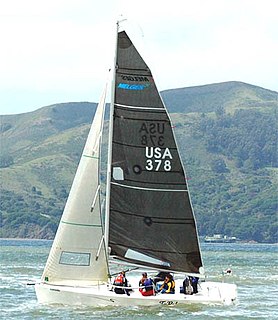
The term sportsboat first appeared in the late 1980s and early 1990s to describe trailer sailers that were optimised for high performance at the expense of accommodation and ballast. The very definition of the term "sportsboat" is evolving.
The Norfolk Punt is a type of yacht, derived from the flat-bottomed gun punts that roamed the Broadland waters in the mid-to-late 19th century. However, at the turn of the 20th century, in order to get to and from the hunting grounds more quickly, the punters developed their highly unstable craft to carry a basic mast and sail for travelling with the wind. It is from these humble beginnings that one of the country's most exciting and powerful racing dinghy classes was born.
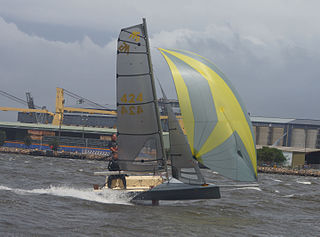
MG14 is a two-person skiff with a high-performance development hull, single trapeze and asymmetrical spinnaker.

The Esse 850 is an 8.5 metre long racing sportboat designed by Umberto Felci and built by Josef Schuchter Sportboats of Stafa, Switzerland. The first hull was sold in 2004 and the Esse 850 International Class Association was begun in 2005 in Europe.

The term lambo or lamba refer to two types of traditional boats from Indonesia.

The Esse 990 is a 9.9 meter long racing sportboat designed by Umberto Felci and built by Josef Schuchter Sportboats of Stafa, Switzerland. The first hull was sold in 2008 and series production was begun in 2009.

Sakman, better known in western sources as flying proas, are traditional sailing outrigger boats of the Chamorro people of the Northern Marianas. They are characterized by a single outrigger and a crab claw sail. They are the largest native sailing ships (ladjak) of the Chamorro people. Followed by the slightly smaller lelek and the medium-sized duding. They are similar to other traditional sailing ships of Micronesia, like the wa, baurua, and the walap. These ships were once used for trade and transportation between islands.
The Buccaneer 240 and Buccaneer 245 are a family of American trailerable sailboats that were both designed as cruisers and first built in 1975.
References
- ↑ Steward, Robert; Boatbuilding Manual, 3rd ed. International Marine Publishing Company. Camden, Maine (1987), p2-3. ISBN 0-87742-236-2
- ↑ Lear, Dave (28 August 2018). "How do traditional Deep-V hull designs compare to their high-speed, stepped hull counterparts?". Bluewater Yacht Sales.